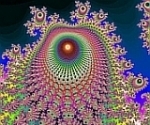If you look at the late-2007 date of that article, you'll notice that it's virtually brand new research. The above finding potentially represents yet another newly discovered pathology or SDB phenotype. And if SAG is in the process of getting that kind of equipment set up in his lab to discern similar prolonged TcCO2 spiking patterns, this part of the discussion is unfortunately going to take a while to unfold. I'm also wondering about the above prolonged TcCO2 spikes possibly occurring in yet other potential cases of less-than-frank or "almost-PB-like" oscillations around here. Perhaps these TcCO2 findings may turn out to be relevant to OutaSync's, DSM's, Echo's, or even Frequen's somewhat atypical SDB cases.above linked article wrote:The changes in the transcutaneous carbon dioxide tension (TcCO2) were defined for different breathing patterns. During prolonged spiking episodes the TcCO2 increased significantly and differed statistically from the TcCO2 changes of normal breathing and periodic breathing patterns (episodes of apnea and hypopnea). The rise in TcCO2 during prolonged spiking episodes might suggest that prolonged spiking is representing another type of breathing disturbance during sleep differing from periodic breathing patterns.
Very shortly after CSDB was announced in 2005 as a third and altogether separate SDB phenotype (Harvard-based research by Gilmartin, et al), SAG's center was already diligently investigating and selectively incorporating certain elements among all new CSDB findings into their own diagnostic and treatment protocols. By contrast, well more than a couple years after that 2005 landmark finding, some sleep labs had yet to incorporate any CSDB findings into their diagnostic and treatment protocols.
Anyway, this facet of the discussion may take a while to unfold because it's virtually unexplored medical territory. And yet, by its very TcCO2 oscillatory nature, it may turn out to be uncannily central to you and those high VB patterns. But that's just my layperson's take.
















